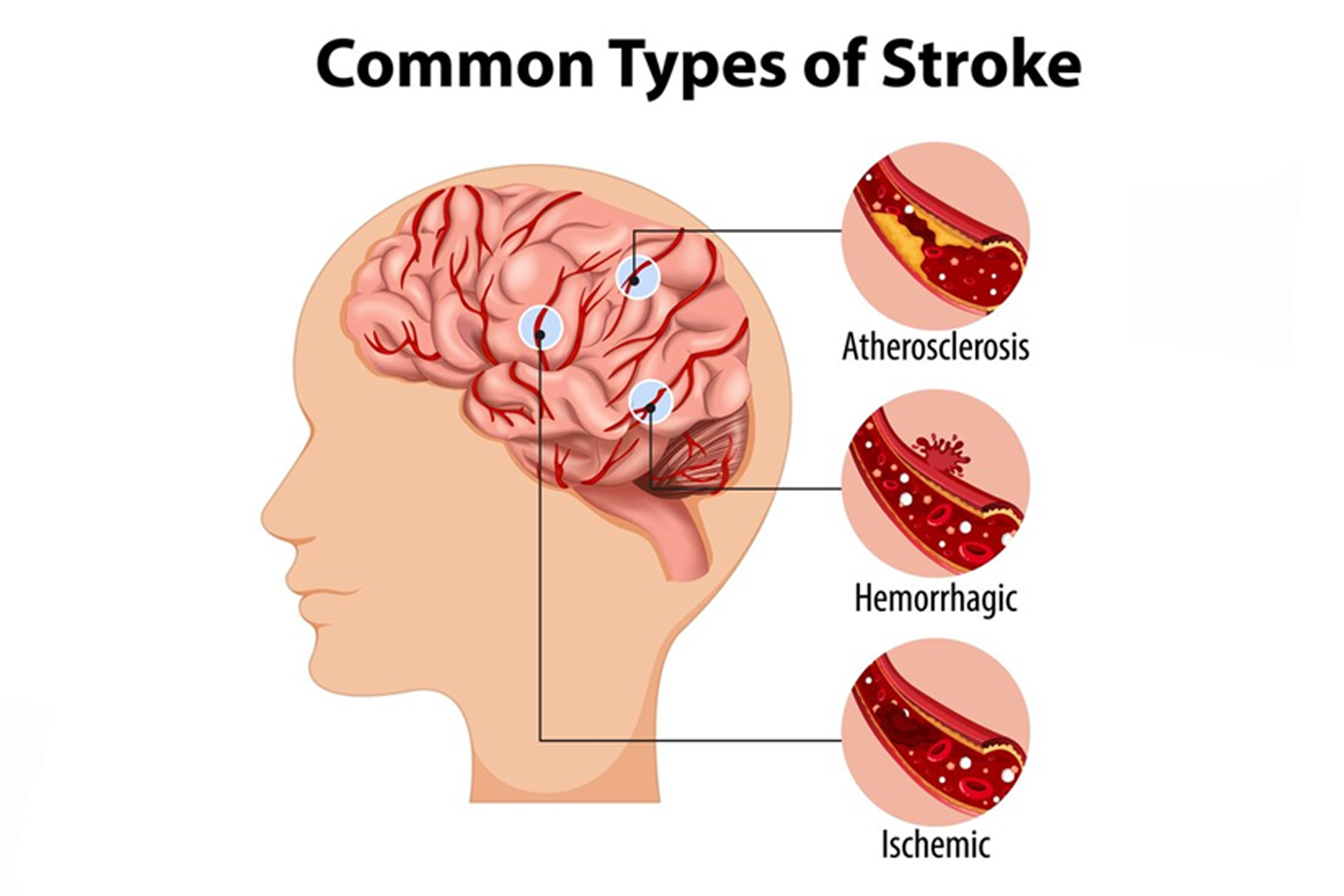
Understanding Stroke: Symptoms, Causes, and Prevention
Posted Jan. 15, 2025 by Dr. Aniruddha DharmadhikariWhat is a Stroke?
A stroke happens when the blood flow to a specific area of the brain is blocked or reduced, cutting off the oxygen and nutrients the brain tissue needs to function. This can lead to brain cell damage or death within minutes, making it a medical emergency.
Types of Stroke
- Ischemic Stroke: Caused by a blocked artery, accounting for 87% of all stroke cases.
- Hemorrhagic Stroke: Caused by a ruptured blood vessel, leading to bleeding in or around the brain.
- Transient Ischemic Attack (TIA): A short-term disruption in blood flow to the brain, often referred to as a "mini-stroke."
Common Symptoms of Stroke
- A sudden feeling of numbness or weakness in the face, arm, or leg, typically affecting one side of the body.
- Confusion or trouble speaking.
- Difficulty understanding speech.
- Trouble seeing in one or both eyes.
- Trouble walking, feeling dizzy, or experiencing a loss of balance and coordination.
- Severe headache with no known cause.
- Tingling sensations over the body such as around the mouth, hands, or legs.
- Severe vomiting, giddiness.
Remember: Act F.A.S.T.
- Face Drooping
- Arm Weakness
- Speech Difficulty
- Time to Call Emergency Services Immediately
‘Golden Hour’ for Ischemic Stroke:
The first 60 minutes after a stroke (up to 4-5 hours) is known as the "golden hour." Treatment given during this time is most effective, minimizing brain damage. So, reach the hospital as early as possible.
Risk Factors
Modifiable Risk Factors:
- High blood pressure
- Smoking
- Diabetes
- Obesity
- Physical inactivity
- High cholesterol
Non-Modifiable Risk Factors:
- Age (higher risk for people over 55)
- Family history
- Gender (men are at higher risk, but women often experience worse outcomes)
Prevention Tips
- Maintain Healthy Blood Pressure: Aim for a normal range of 120/80 mmHg.
- Stay Active: Regular physical activity helps manage weight and reduces stroke risk.
- Stop Smoking: It harms blood vessels and speeds up the formation of blood clots.
- Adopt a Healthy Diet: Include fruits, vegetables, whole grains, and lean protein while reducing salt and trans fats.
- Monitor Chronic Conditions: Proper management of diabetes, heart disease, and cholesterol levels can reduce risks.
- Limit Alcohol: Excessive drinking increases the likelihood of high blood pressure.
Recovery and Rehabilitation
Stroke survivors often require rehabilitation to regain lost skills and improve their quality of life. Common therapies include:
- Physical Therapy: Improves mobility and strength.
- Speech Therapy: Addresses difficulties with speaking or swallowing.
- Occupational Therapy: Helps relearn daily tasks and maintain independence.
When to Seek Help
A stroke can occur unexpectedly in anyone. Prompt medical care is essential to reduce brain damage and enhance recovery chances. If you or someone around you shows signs of a stroke, call emergency services immediately.
What Our Patients Say

My father's Anjioplasty done successfully. This hospital is very expert hospital in cardiology. All doctors and other staff is very cooperative. Patient care is very nice. All medical facilities available. Good house keeping. Thanks.

My Pace maker procedure done successfully. All doctors and support staff is very cooperative. Patient care is very good. Nice housekeeping. Thanks.

This hospital is one of the best Cardiac care hospital in India. All doctors and support staff is very cooperative. My Anjiography and Anjioplasty done successfully. Patient care is very nice. House keeping is very good. Thanks to all.

This hospital is very best multi-speciality hospital. All doctors and staff is very cooperative. Patient care is very nice. Very best house keeping. Thanks.

Good people to take care of patients. Well managed and doctors do pay attention to the details. Friendly and helpful staff.My dad had a successful angioplasty here and I am hoping to have a follow up with degree of attention.I thank all the staff and doctors.

This hospital is very best multyspeciality hospital. My spinal fusion operation done succesfully. All doctors and staff is very nice. Paitent care is very good. Thanks.

My father's Anjiography and Angioplasty done successfully. This hospital is one of the best cardiac care hospital in India. All medical facilities available. All doctors and support staff is very cooperative. Patient care is very good. Thanks to all Saibaba team.

This hospital is one of the best cardiac care hospital in Maharashtra. All medical facilities available. All doctors and support staff is very expert. Patient care is very good. My Anjiography and Anjioplasty done successfully. Very good House keeping. Thanks to all..

My brother's Bye pass surgery done successfully. This hospital is very best cardiac care hospital in Nashik. All medical facilities available. Patients care is very nice. All doctors and staff is very cooprative. House keeping is very good. Thanks to all.

